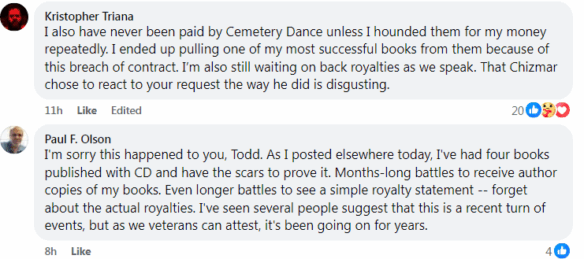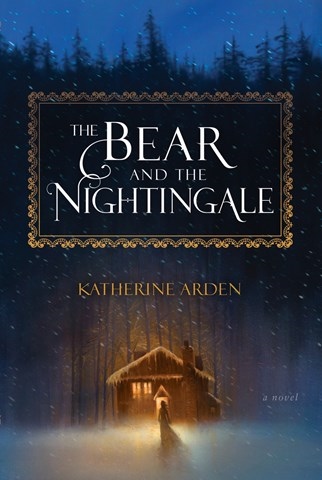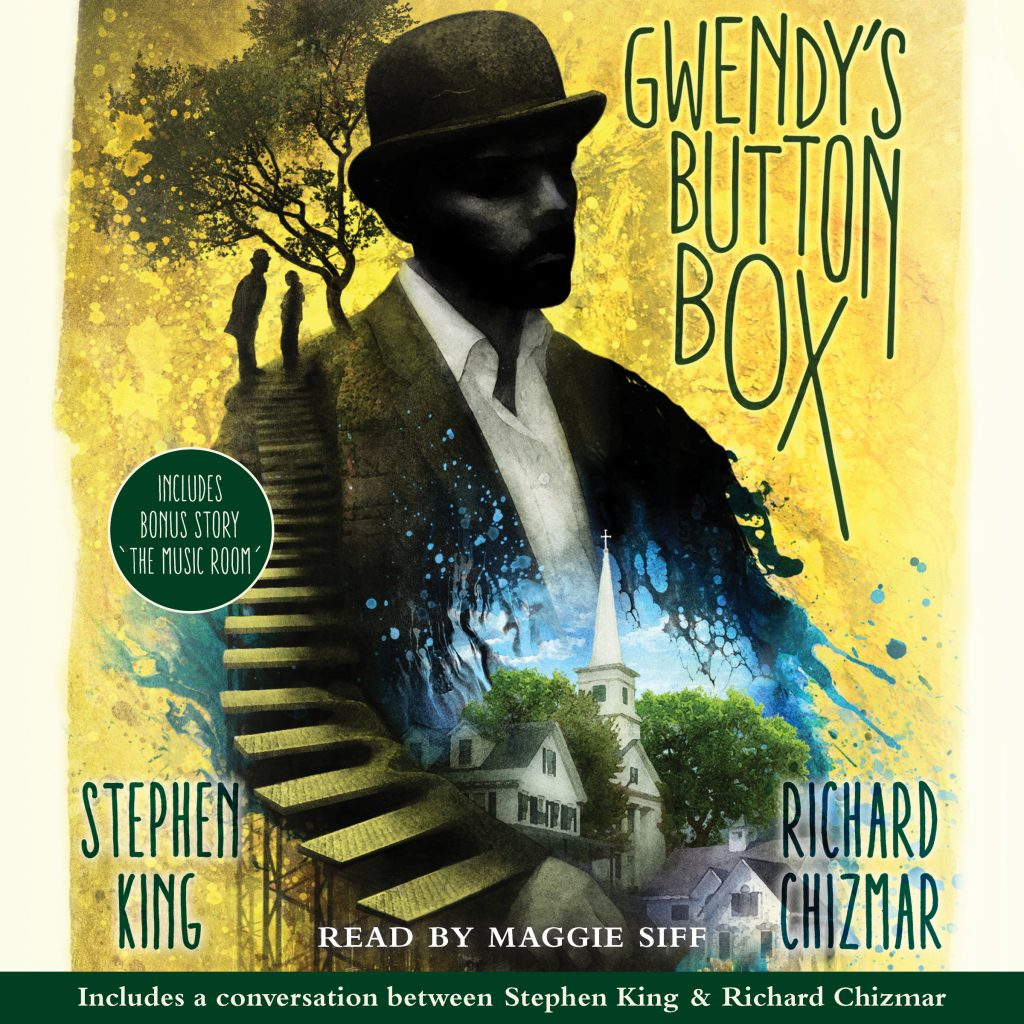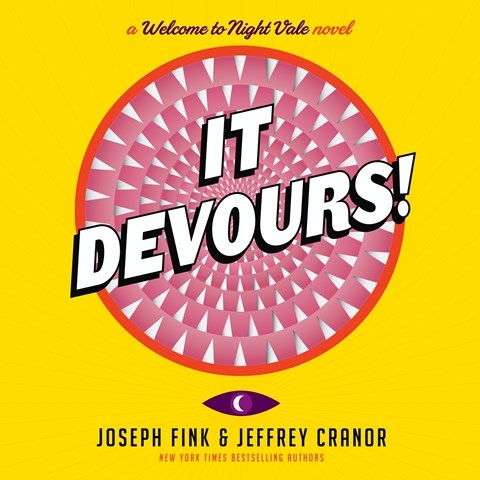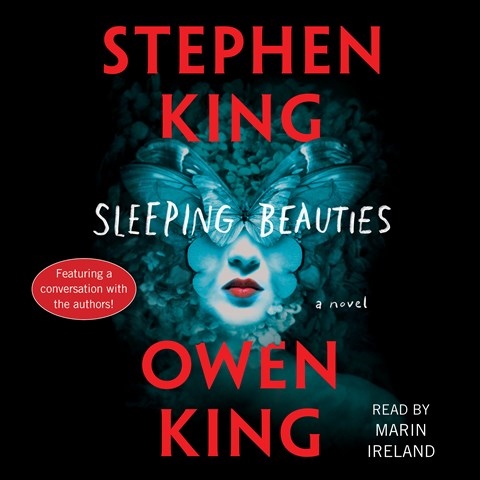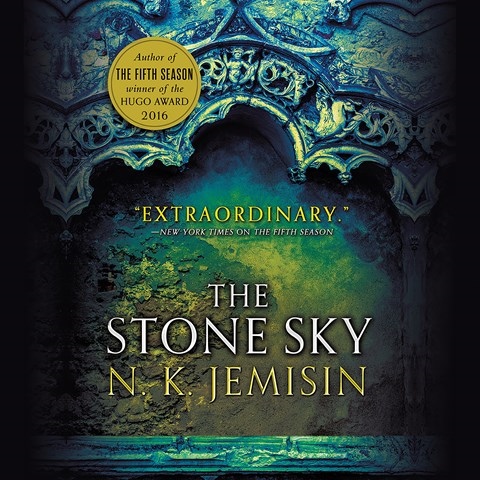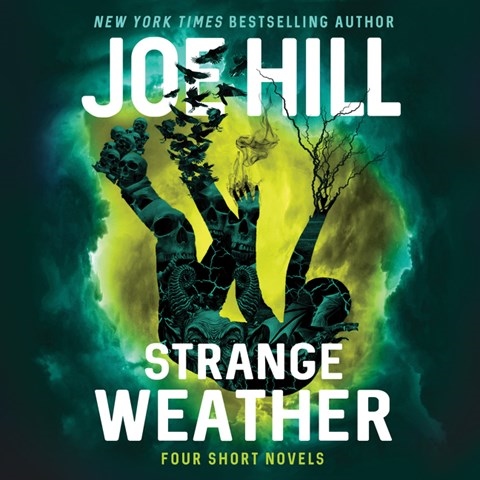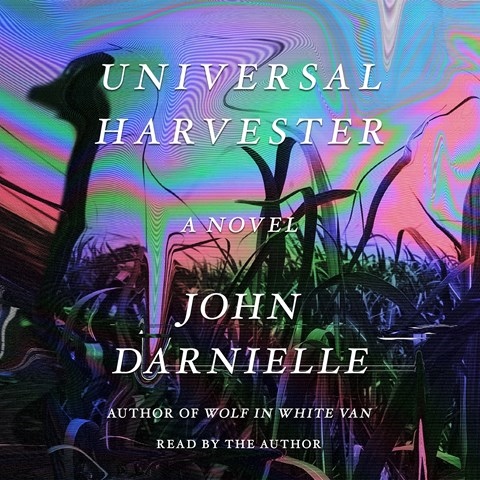(1) AUTHOR’S ADDITIONAL COMMENTS ABOUT HORROR PUBLISHING GRIEVANCE. Todd Keisling posted a follow-up message on Bluesky to yesterday’s complaint about his experience with Cemetery Dance publisher Richard Chizmar. In the new post he also takes the Horror Writers Association to task.


(2) WHEN THE DEAN OF SCIENCE FICTION WAS A FRESHMAN. A Deep Look by Dave Hook asks, “Was ‘The Runaway Skyscraper’ Really the first SF story by Murray Leinster?” Hook analyzes several rival candidates and explains why they are unpersuasive before agreeing with the canonical answer.
…Finally, we come to novelette “The Runaway Skyscraper“, Argosy and Railroad Man’s Magazine, February 22, 1919, which I also believe is the first SF story by Murray Leinster.
There are some first published stories by authors that are quite stunning and can be considered classics. I wrote about this at Dave’s Favorite First Stories of Science Fiction. I believe there are varying reasons for this, including learning one’s craft at non-genre publications under other names as one common example. “The Runaway Skyscraper”, the 58th story by Murray Leinster published that I know of, is not one of those.
I am not willing to say it’s a “Great” story, or even “Very good”, but I was entertained by it and I have no regrets on reading it….
(3) WEDNESDAY ON THE CALENDAR. Entertainment Weekly says that new cast members include Steve Buscemi, Joanna Lumley, Thandie Newton, Christopher Lloyd, and Lady Gaga: “’Wednesday’ season 2: Release date, cast, plot details, and more”.
…Netflix shared an action-packed teaser trailer for season 2 that highlights Wednesday’s return to Nevermore alongside her family.
“This is the first time you’ve ever willingly returned to a school,” says Morticia. “How does it feel?”
“Like returning to the scene of a crime,” Wednesday deadpans….
…Wednesday’s eight-episode second season will arrive in two installments. The first four episodes strut onto the streamer on August 6, and the last four land on September 3….
(4) MACE WINDU IS FEELING BETTER. “Samuel L. Jackson, Hayden Christensen surprise ‘Star Wars’ screening” reports Entertainment Weekly.
The Force was strong at the El Capitan Theatre in Los Angeles on Friday.
Star Wars castmates Hayden Christensen and Samuel L. Jackson surprised fans when they showed up at a special 20th-anniversary screening of Star Wars: Episode III – Revenge of the Sith.
Christensen first took the stage at the historic Hollywood cinema while wielding a red lightsaber, telling the crowd that he had “so many amazing memories of making” the final Star Wars prequel, in which Anakin Skywalker embraces the dark side as he becomes Darth Vader and aids Palpatine in his hostile takeover of the Galactic Republic.
“I see a lot of lightsabers out here,” Christensen said to the audience. “I see a lot of red lightsabers, which truth be told is my personal favorite lightsaber color.”
He was then interrupted by the voice of an unseen visitor. “Hold on, Skywalker,” Jackson said from off stage. “This party ain’t even over.”
Christensen then introduced his former costar. “Ladies and gentlemen, please welcome to the stage Mace Windu himself, Samuel L. Jackson.”
Jackson seemed thrilled by the audience’s thunderous applause. “This is so, so, so awesome,” he said. “Twenty years later, I can hardly believe that we’re still as popular — as happenin’ — as we are. I haven’t seen Hayden in a while, but so, so, so happy to come back, see him, and see all of you at the same time. Thank you all so much. We had a great time making the film down in Australia. We were hangin’ out, doin’ stuff.”…
(5) IMPERIAL Q&A. Variety quizzes the actor: “’Star Wars’ Star Ian McDiarmid on ‘Revenge of the Sith,’ Playing the Emperor”.
How carefully mapped out was Palpatine’s arc when you were first re-hired to play him in “The Phantom Menace”?
It wasn’t mapped out at all, really. When I first got the part, I had no idea what the world was that I’d be in charge of as the Emperor. So it started off as a big mystery. I had no idea that Palpatine would figure [into the story so heavily]. But by then it so happened that I was young enough to play the younger Senator. When I first met George about it, he said, “Do you know anyone who wants to play an Emperor?” I said, “I think you know the answer to that question.” And then I got the script and realized that he was more than one character, which made it even more fascinating to play — an ordinary, everyday, fairly hypocritical politician with a monster hiding inside his body…
….This is a character who can turn on emotion when needed. What reality are you playing as an actor to be able to tap into those feelings?
Well, he’s a hypocrite, plain and simple — and a very good actor. He’s a performance. He’s only interested in one thing: absolute power. It sounds objective and black and white, but it’s extraordinary. If you think of people who have absolute power or pretty damn near it, you think that’s all they want, really — wealth and to be able to run people. But also, he was a Sith from way back. Now, I don’t really know what that means, but that particular personality is completely different from everybody else. He plays the human, but he isn’t one. Palpatine embodies the dark side. He relishes it. He thinks people who don’t enjoy it or don’t allow themselves to be drawn to it are stupid….
(6) CONQUEST OF SPACE. With ideas from a Willy Ley book with art by Chesley Bonestell, “70 Years Ago, A Forgotten Sci-Fi Failure Secretly Changed The Genre Forever” remembers Inverse.
When Paramount Pictures gave producer George Pal a then-sizable $1.5 million to make Conquest of Space, his idea was to create the most realistic film about space travel yet. Released in 1955, Conquest of Space followed several other sci-fi hits — including 1951’s Destination Moon and When Worlds Collide, and Pal’s arguable masterpiece, 1953’s The War of the Worlds — that established Pal as a purveyor of the kind of sci-fi spectacle that still puts butts in theater seats today.
With Byron Haskin, his War of the Worlds director, returning to the center seat for Conquest of Space, Pal went against standard Hollywood practice and eschewed hiring expensive stars for his movie. In fact, the opening credits don’t even list a single actor; the little-known ensemble, none of which distinguished themselves here, was relegated to the end credits scroll….
…Some aspects of Conquest of Space are accurate for the era, including the length of time it would take to get to Mars, and certain scenes still make an impact (the funeral in which a crew member’s body is released into space foreshadows a similar scene in Alien 24 years later). Real-life concerns about space travel are addressed (albeit with clunky exposition), and the scenes on Mars are also fairly well-conceived in terms of what scientists knew about our closest planetary neighbor… until it snows near the end, providing the astronauts with much-needed water….
(7) BERT TANNER (1933-2024). Artist Seabourne Herbert (Bert) Tanner Jr. of Maine died March 2, 2024 reports the Duxbury Clipper. His resume included 11 covers for The Magazine of Fantasy and Science Fiction between 1965 and 1973.
…Bert’s career centered on illustration, animation and working with major New York advertising agencies doing animatics and television test commercials. His earlier career focused on science fiction illustration, comic books, aviation and textbook illustration.
He was commissioned to illustrate the then future NASA lunar landing module and was an animator for the startup children’s show “Sesame Street.” He was a long-standing member of the Society of Illustrators. Bert’s wide range of interests included Crimson Tide Football, photography, music, video, film, kites, birds, meteorology, astronomy, hiking, beach volleyball, skiing, snorkeling, current events, and an extraordinary fascination with flight, specifically World War II aviation. To say he loved art is an understatement, he adored all art. He will be remembered for his wonderful creativity, curious mind and great sense of humor. Bert was drawn to the written word and was known by many for his witty poems and limericks. ‘pop’ loved his family and will always be missed for his creative cartoon cards to mark every family occasion…
(8) MEMORY LANE.
[Written by Cat Eldridge.]
April 27, 1922 — Jack Klugman (Died 2012.)
Only three individuals did four or more appearances on Rod Serling’s Twilight Zone and Jack Klugman was one of them.
Let’s discuss his appearances. He was in “A Passage for Trumpet,” “A Game of Pool”, “Death Ship” and “In Praise of Pip”.
In “A Passage for Trumpet” he’s Joey Crown, a hopeless NYC trumpeteeer with no money, no friends, and no job prospects due to being an alcoholic. He ends in Limbo talking to an Angel.
Next he’s Jesse Cardiff in “A Game of Pool,” where we get told the story of the best pool player living and the best pool player dead. No points for guessing which he is.
Now this episode was remade in the eighties Twilight Zone. That version featured Esai Morales as Jesse Cardiff and Maury Chaykin as Fats Brown. This version used the original alternate ending that Johnson intended for the original version. (Nope in keeping with the File 770 policy of not having spoilers if at possible, I’m not telling you what that ending was. After all it’s only been sixty years and some of you might not have seen it yet.)
The next episode he’s in is definitely SF and based on a Richard Matheson short story with the same title, “Death Ship”. (It was first published in Fantastic Story Magazine, March 1953.) Matheson wrote sixteen episodes of The Twilight Zone including “Nightmare at 20,000 Feet”. Only Serling wrote more. In this episode, a spaceship crew discovers a wrecked replica of their ship with their own dead bodies inside. Klugman plays the Captain Paul Ross.
The model used in this episode of the hovering spaceship is that of a C-57D Cruiser, a leftover prop from Forbidden Planet. It would also be used in the episodes “The Monsters Are Due on Maple Street” and “Third from the Sun”. The crashed ship is a model created for this episode.
The final appearance by him is in “In Praise of Pip” where his role is Max Philips, a crooked bookie, who after learning that his soldier son has suffered a mortal wound in the Vietnam War, apparently encounters a childhood version of his son.
The Twilight Zone streams on Paramount +.

(9) COMICS SECTION.
- Saturday Morning Breakfast Cereal explains the changing pitch of the sirens’ call.
- Alley Oop finds alien school familiar.
- Dog Eat Doug has a crisis in the cockpit.
- Glasbergen tells a corporate fairy tale.
- Rhymes with Orange needs a sound alternative.
- Rubes starts a mystery.
(10) ISSUES IN GAME HISTORY. “Fallout creator Tim Cain says he was ‘ordered to destroy’ his personal archive of the RPG’s development: ‘Individuals and organizations actively work against preservation’” at GamesRadar+.
With each passing year, game preservation grows more and more relevant, and you can add Fallout creator Tim Cain to the many voices calling for a more serious approach to saving video game history. Cain knows the struggle of actually preserving this stuff better than most – after all, he was ordered to destroy his own Fallout archives when he left developer Interplay.
“There’s a lot of organizations out there that demand to be the archive keeper, and then they do a terrible job at it,” Cain says in a new YouTube vlog. “They lose the assets they were in charge of keeping. This has happened multiple times in my career. When I left Fallout, I was told ‘you have to destroy everything you have,’ and I did. My entire archive. Early design notes, code for different versions, prototypes, all the GURPS code – gone.”Cain says that Interplay intended to keep an archive internally, but “they lost it. When they finally, a few years after I left, contacted me and said ‘oops, we lost it’ I thought they were trapping me into ‘we’re going to sue you if you say you have it.’ Turns out, no, they really lost it.”…
(11) SOCIAL LEARNING, BRICK BY BRICK. “What makes successful learners? How Minecraft can help us understand social learning” at Phys.org.
The ability to learn socially from one another is a defining feature of the human species. Social learning enables humans to gradually accumulate information across generations. And although we are able to build cities full of skyscrapers, send people into space, and collectively develop cures for diseases, most studies investigating social learning mechanisms focus on relatively simple, abstract tasks that bear little resemblance to real-world social learning environments.
As a result, little is known about how humans dynamically integrate asocial and social information in realistic, real-world contexts. To investigate this, an international team of scientists from the Cluster of Excellence Science of Intelligence (SCIoI), the Max Planck Institute for Human Development (MPIB), the University of Tübingen, and NYU developed a virtual foraging task programmed in the popular video game Minecraft.
In their study, published in Nature Communications, they found that adaptability (i.e. flexibly using asocial and social learning strategies, rather than fixed strategies) is the most important driver of success….
(12) HUBBLE BIRTHDAY E-BOOK IS A FREE DOWNLOAD. To celebrate Hubble’s 35th birthday (how time has flown!) NASA has released a free e-book containing some of the stunning images received over the years, and more! “Hubble’s Beautiful Universe” from NASA Science.
For 35 years, the Hubble Space Telescope has orbited above Earth’s atmosphere, teaching us more than we ever imagined we could know about our universe and place within it. In addition to Hubble’s extraordinary scientific value, its transformative views of space continue to inspire and shape how we think about the cosmos.
In celebration of this benchmark anniversary, we’re sharing a new, free, and downloadable e-book. Hubble’s Beautiful Universe takes readers on a journey through Hubble’s mission, from 1990 to today, with many of the breathtaking images of the cosmos it’s collected along the way.
This book unfolds Hubble’s long-ranging story decade by decade, highlighting each era’s contributions to astronomy. It showcases Hubble’s important “firsts” that changed the way we understand our universe, and also explains the groundbreaking scientific concepts that Hubble studies, like mysterious dark matter and our universe’s accelerating expansion.
From groundbreaking astronaut servicing missions, to record-shattering observations, to jaw-dropping peeks into the deepest reaches of space, Hubble has shown Earth a universe more beautiful and more mysterious than anyone could have understood before its launch. As the Hubble team anticipates more years of discovery ahead, Hubble’s Beautiful Universe offers an exciting overview of the first 35 years of NASA’s most prolific astronomy mission.

(13) 10 EXPECTATION DEFYING SF/F BOOKS. [Item by SF Concatenation’s Jonathan Cowie.] Book Pilled has an interesting life collecting and selling SF/F books. He is also an avid reader. Here he reveals 10 SF/F books that defied his expectations in a 20 minute video.
[Thanks to Mark Roth-Whitworth, Steven French, Kathy Sullivan, Teddy Harvia, Mike Kennedy, Andrew Porter, John King Tarpinian, Chris Barkley, Cat Eldridge, and SF Concatenation’s Jonathan Cowie for some of these stories. Title credit belongs to File 770 contributing editor of the day Dan’l.]






